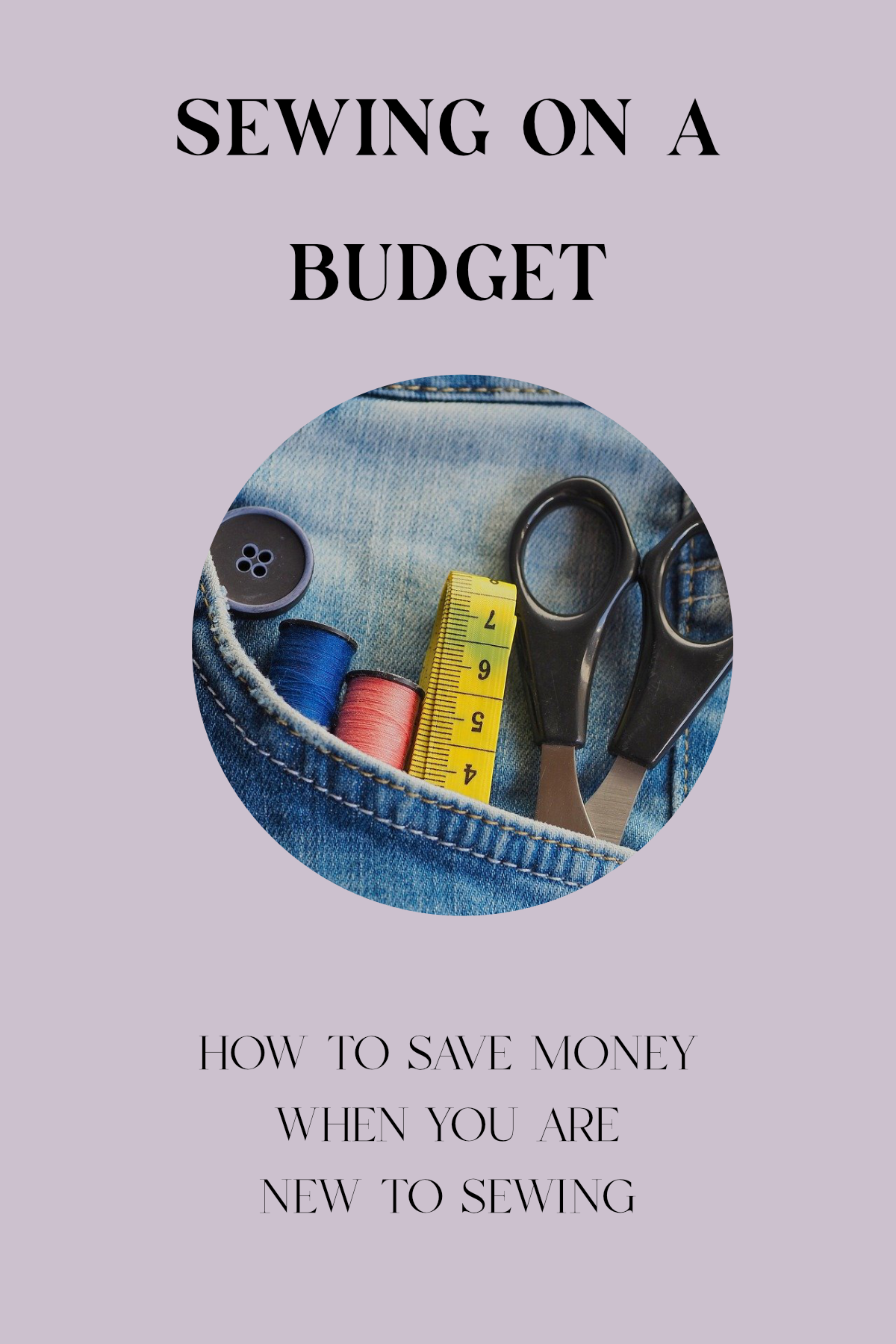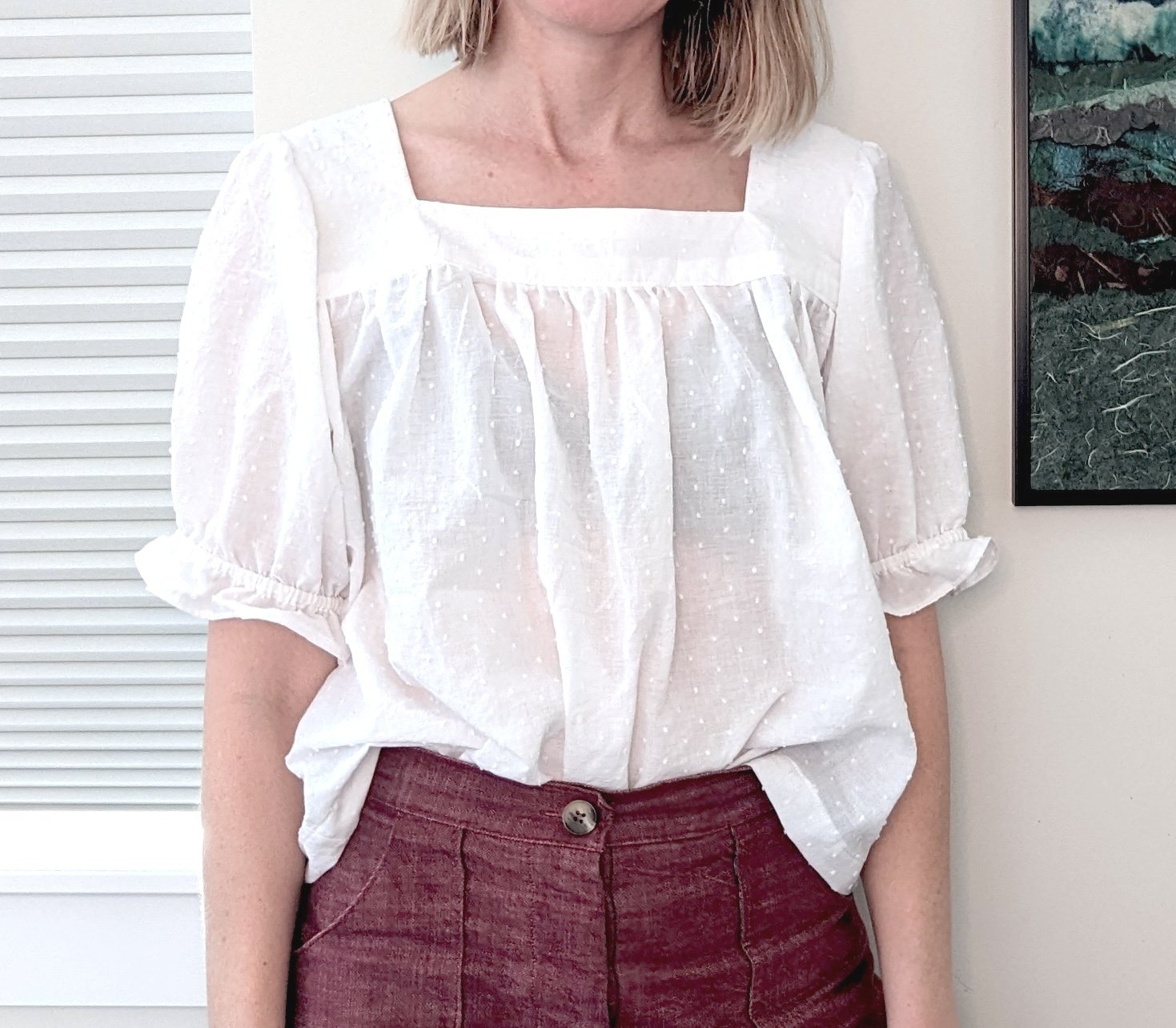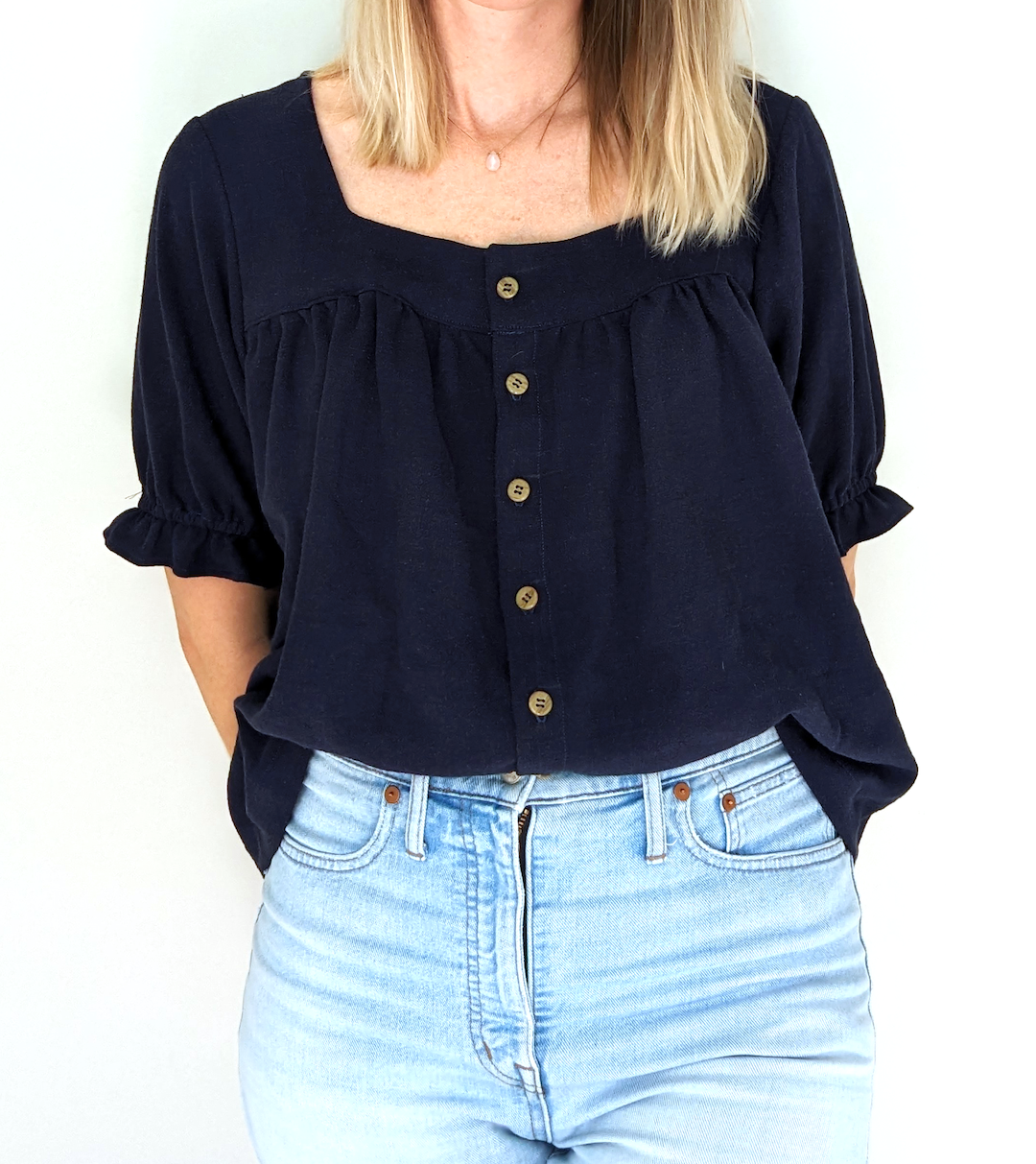
A Basic Sewing Glossary
Need help interpreting your sewing patterns? Sewing comes with its very own language and vocabulary! Here's a simple and beginner-friendly definition for some of the most common sewing terms you will come across:
Armscye: The opening in a garment where the sleeve is attached.
Backstitch: A strong stitch that goes backward to secure seams and prevent unraveling.
Bar tack: A series of closely spaced stitches used to reinforce areas like pocket edges.
Baste: Long, temporary stitches used to hold fabric pieces in place before final sewing.
Bias: The diagonal direction across woven fabric, at a 45-degree angle to the grainline. Fabric cut on the bias has more stretch and drapes differently than fabric cut along the straight grain.
Bias Tape: Strips of fabric cut on the bias, used for binding edges or creating decorative trims.
Bobbin: A small spool that holds the lower thread in a sewing machine.
Buttonhole: A reinforced slit or hole in fabric to accommodate a button.
Casing: A fabric tunnel sewn into a garment that holds a piece of elastic, drawstring, or cord. It is often used in waistbands or sleeve hems to gather fabric snugly.
Clipping corners: Cutting small triangles off fabric corners to reduce bulk when turning inside out.

Sewing on a Budget: How to Save Money When you are New to Sewing
If you’re here you already know that sewing is a fun and rewarding hobby. Whatever you like to sew, there's something truly special about creating with your own hands. One thing sewing is not, however, is cheap. Despite the misconception that sewing is more frugal than buying clothes, buying fabric, tools, patterns, and notions can add up to quite the cost. In fact, I would bet that it is the initial cost that holds many people back from learning to sew. But don’t worry! With some smart strategies, you can enjoy sewing while staying within your budget.

Five Projects to Sew First
If you’ve made it through the last five posts, congratulations! You know how to work your sewing machine, you’ve practiced your stitches, you know how to read a sewing pattern, and you’ve learned how to choose the right fabric. Now let’s sew!
In this post, we’ll guide you through some beginner-friendly sewing projects focused on garments and accessories. These projects will help you build confidence, familiarize yourself with your machine, and hone your skills—without the frustration of tackling complex designs too early.
Many sewing tutorials will recommend choosing something like a pillowcase for your first project, but let’s be honest, that’s just not very fun. If you’re like me and you need instant gratification, sewing a garment or accessory will get you more pumped up for sewing and make it a more rewarding experience. Just don’t expect it to turn out perfect or put too many expectations on yourself! I made so many mistakes in my first few sewing projects and learned from every single one.

Learning to Sew for Beginners Part 5: Choosing a Fabric Continued
Ok, if you read my last post you know that I can clearly talk about fabric all day long. Hopefully that post is helpful to those who are trying to understand the very basics of how fabric is made and what materials it is made from. Now I want to get more specific about what you might see in stores and online when you are buying fabric for a sewing project. When you first start sewing, fabric choices can seem overwhelming and it’s my goal to simplify that a little bit!
Let’s start by imagining that you are shopping for a pattern (it doesn’t matter what kind of pattern; we’ll get to that later). Most fabric stores and online fabric shops will organize their fabric by “type.” Sometimes that “type” refers to fiber content (like a webpage or aisle devoted to linen), sometimes it might refer to how you might use that fabric (like “athletic knits” or “swim knits”) and sometimes it might refer to the weave/knit type (like “twill” or “ribbed knits”). Confusing? It can be when you’re just starting out! Scroll down to see a definition of some of the most common fabric “types” and how you might use them.

Learning to Sew for Beginners Part 4: Choosing a Fabric
I’m going to simplify this a little because it’s very easy to get carried away into the world of textiles and I’m not trying to overwhelm anyone. All fabric can basically be defined by two things: the fiber content and the weave (or knit). Fiber content is the material that is used to make the fabric, and the weave/knit is how those fibers were put together. Woven fabrics are made using weaving techniques. A basic weave is like a basket- imagine the paper weaving we did as kids: one under, one over, one under, one over, etc. There are other weaving styles that can affect the appearance of the fabric, but (almost) all woven fabric has no stretch.

Learning to Sew for Beginners Part 3: Using and Understanding Sewing Patterns
Now that you have your machine set up and ready to go, you’ve gotten to know how all the buttons and knobs work, and you’ve tested your stitching on some scrap fabric, you’re ready to move on to an actual sewing project and for that you will need a pattern. Fun fact: I sewed my very first dress without a pattern. I was too scared to use one, so I just copied what I saw from some ready to wear dresses, guessed how big things should be based on my measurements, and went for it. To be honest, it didn’t turn out that bad, and I learned a lot, but I would not suggest taking my path.

Learning to Sew for Beginners Part 2: Ten Techniques to Master First
Master the ten techniques detailed below and become an expert sewist in no time!

The Only Tools You Really Need to Start Sewing
If you are dreaming of learning how to sew, you may be overwhelmed by the amount of tools on the market for sewing. Don’t get me wrong, a lot of these tools are great to have; however, if you just want to get your feet wet and see if sewing is the hobby for you, you may not want to have to buy a lot of expensive items. The good news is you really don’t need to. There are only a handful of things you must have in order to sew successfully. Here are the tools that are non-negotiable if you want to sew at home:

All the Sewing Tools You Never Knew You Always Wanted
If you’ve decided that sewing is the hobby for you, you may want to move on from the bare essentials of sewing tools and branch out from the need-to-have tools to the nice-to-have tools. Maybe you want to up your sewing game by making more complicated garments, or maybe you just want to make your life a little easier. Here are some tools I recommend:

Hacking the Elizabeth Blouse: Removing the Button Placket
It’s easy to remove the button placket from the Elizabeth blouse, making it into a square-neck pullover top. Here are the simple instructions to do so

Learning to Sew for Beginners: Part 1- Getting to Know Your Sewing Machine
If you want to learn how to sew, the first thing you need to do is get comfortable with using your sewing machine. I know hand sewing is a skill, but unless you’re planning to hand sew garments like a couture fashion house, sewing machines are where it’s at. Read ahead for tips on getting to know your machine before you even open a pattern.

Elizabeth Blouse Sewing Tutorial
The Elizabeth blouse is a great sewing project for beginner sewists and more advanced sewists alike. Follow along for additional photos and tips to make your sewing project a success.

7 Reasons why YOU should learn to sew!
Wondering if sewing is the right hobby for you? Here are seven reasons why you should learn to sew, including creative freedom, environmental benefits, and creating a wardrobe that fits your unique body.

Introducing the Elizabeth Blouse Sewing Pattern…
For the last several months, I’ve been hard at work creating a garment pattern that I feel so proud of. I’m thrilled to finally release her into the world: the Elizabeth blouse sewing pattern!

